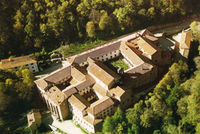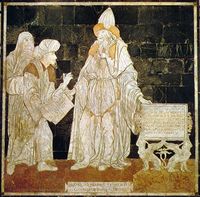Category:Second Temple Studies--1450s
Second Temple Studies in the 1400s--Works and Authors
< ... -- 1400s -- 1500s -- 1600s -- 1700s -- 1800s -- 1850s -- 1900s -- 1910s -- 1920s -- 1930s -- 1940s -- 1950s -- 1960s -- 1970s -- 1980s -- 1990s -- 2000s -- 2010s -- ... >
Overview
At the roots of the modern study of "Second Temple Judaism" was the “rediscovery” of Flavius Josephus, that made post-biblical Judaism historically significant, after centuries of oblivion, in the broader context of a renewed interest in Classical Studies.
But it was the movement of the Christian Cabalists and their philosophical search for universal wisdom, that gave theological meaning and dignity to post-biblical Jewish literature. Giovanni Pico della Mirandola identified the Jewish cabalistic books as the "seventy secret books" preserved by Ezra in addition to the Torah of Moses. In Pico's view these book are a source of philosophical truth that predates the establishment of Judaism, Christianity and Islam and is also at the foundation of the philosophy of the Greeks.
@2014 Gabriele Boccaccini, University of Michigan
Pages in category "Second Temple Studies--1450s"
The following 13 pages are in this category, out of 13 total.
1
- (++) De antiquitate Judaica. De bello Judaico (1470 Schüssler), book (ed. princeps - Latin)
- ספר יוסיפון (Josippon / 1474-76 Conat), book (Hebrew / ed. princeps)
- De antiquitate Judaica. De bello Judaico (1475-76 Brandis), book
- De Bello Judaico (Jewish War / 1475 Sacchi, Pannartz), book
- Storie sacre (Sacred Narratives / 1475c Tornabuoni), poetry
- Josephi opera (1481 Squarciafico), book
- Conclusiones philosophicae, cabalisticae et theologicae (1486 Pico della Mirandola), book
- Oratio de hominis dignitate (Oration on the Dignity of Man / 1486 Pico della Mirandola), book (Latin)
- Josephus de la Bataille Judaique (Josephus's Jewish War / 1492), book
- De bello judaico (Jewish War / 1492 Palencia), book
- Guerra dei Giudei (1493), book



